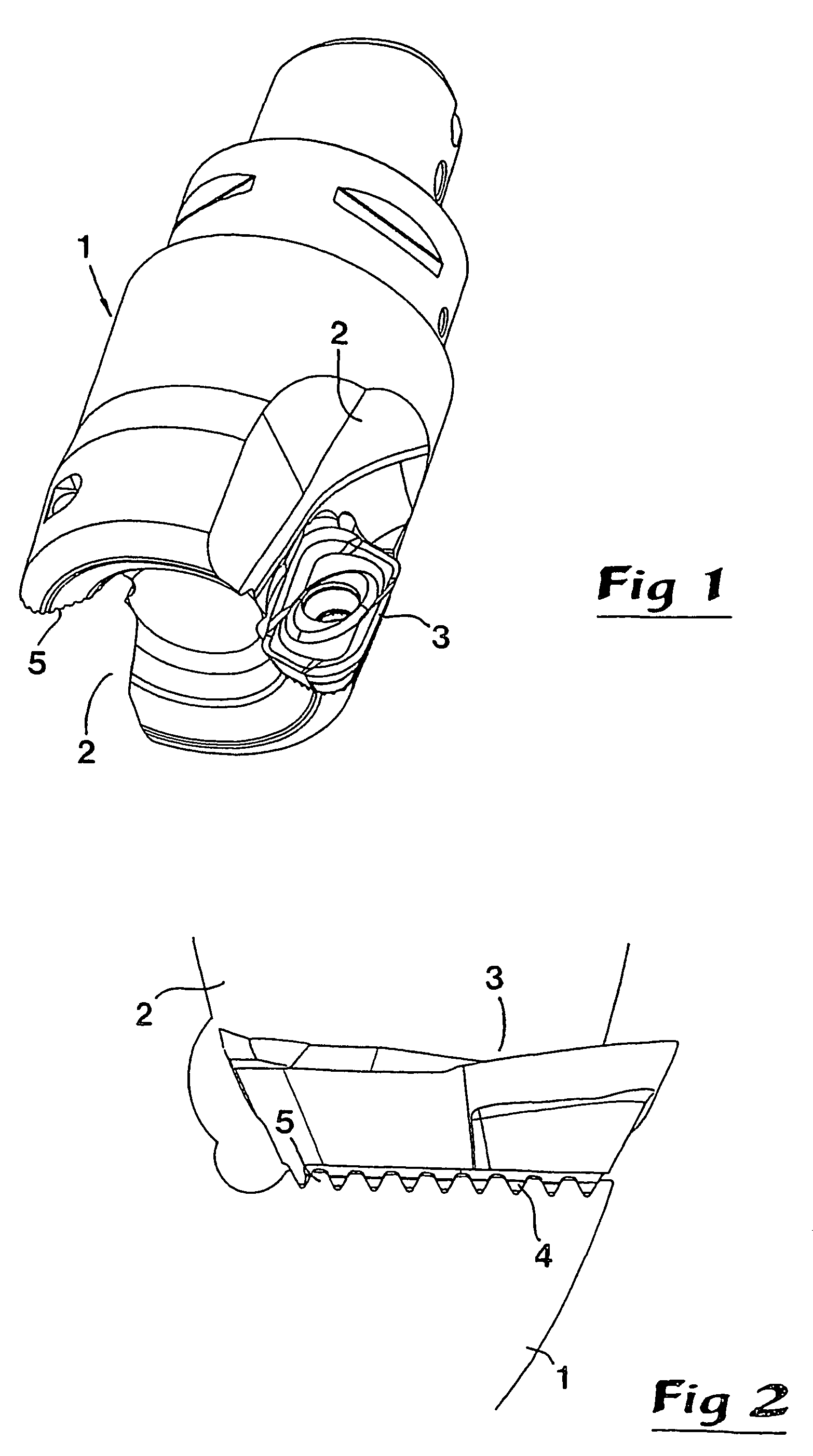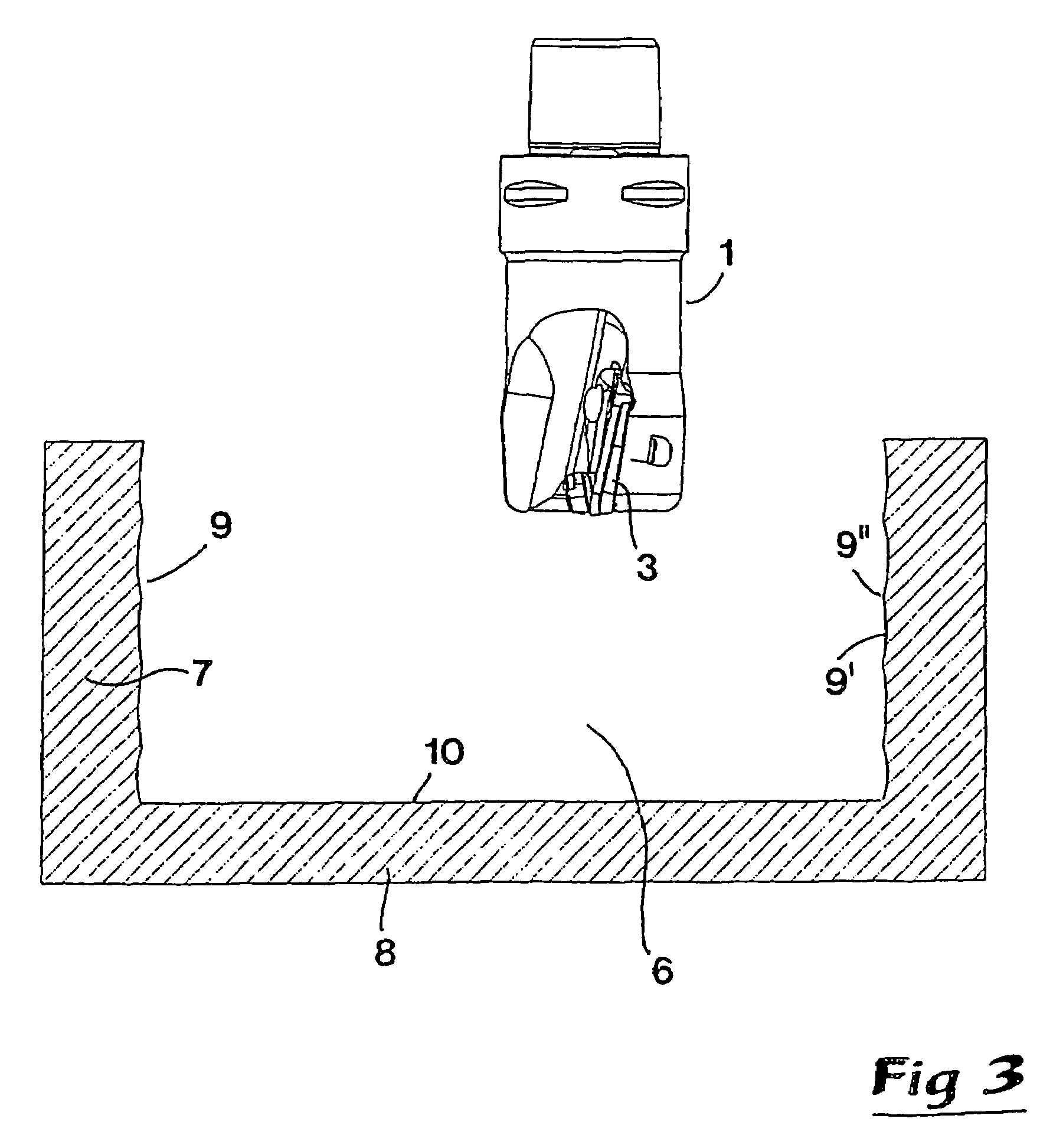Indexable milling insert
a technology of inserts and milling holes, applied in the direction of metal working equipment, metal working apparatus, milling equipment, etc., can solve the problems of more precisely, miller cells, and difficult to achieve suitable surfaces on the walls,
- Summary
- Abstract
- Description
- Claims
- Application Information
AI Technical Summary
Benefits of technology
Problems solved by technology
Method used
Image
Examples
Embodiment Construction
[0021]FIG. 1 shows a milling tool in the form of a head 1 having a rotationally symmetrical basic shape, in the envelope surface of which two chip channels 2 are formed. In one of said chip channels, an insert 3 according to the invention is mounted. In FIG. 2 it may be seen how the insert 3 on a bottom side has at least one connecting surface 4 of the type that comprises a plurality of parallel ridges, spaced-apart via grooves and having a cross-section-wise tapering shape. Said connecting surface is intended to co-operate with a similar, ridged connecting surface 5 which forms a insert seat or seating in the chip channel 2.
[0022]In FIG. 3, the milling tool is shown in connection with a workpiece in which a cavity or cell 6 has been milled, which is delimited by sidewalls 7 and a so-called floor 8. The internal surface of the sidewalls 7 is designated 9, while the upper surface of the floor 8 is designated 10.
[0023]It should be pointed out already now, that the geometry of the tool...
PUM
| Property | Measurement | Unit |
|---|---|---|
| oblique angle | aaaaa | aaaaa |
| oblique angle | aaaaa | aaaaa |
| rotational speed | aaaaa | aaaaa |
Abstract
Description
Claims
Application Information
 Login to View More
Login to View More - R&D
- Intellectual Property
- Life Sciences
- Materials
- Tech Scout
- Unparalleled Data Quality
- Higher Quality Content
- 60% Fewer Hallucinations
Browse by: Latest US Patents, China's latest patents, Technical Efficacy Thesaurus, Application Domain, Technology Topic, Popular Technical Reports.
© 2025 PatSnap. All rights reserved.Legal|Privacy policy|Modern Slavery Act Transparency Statement|Sitemap|About US| Contact US: help@patsnap.com



